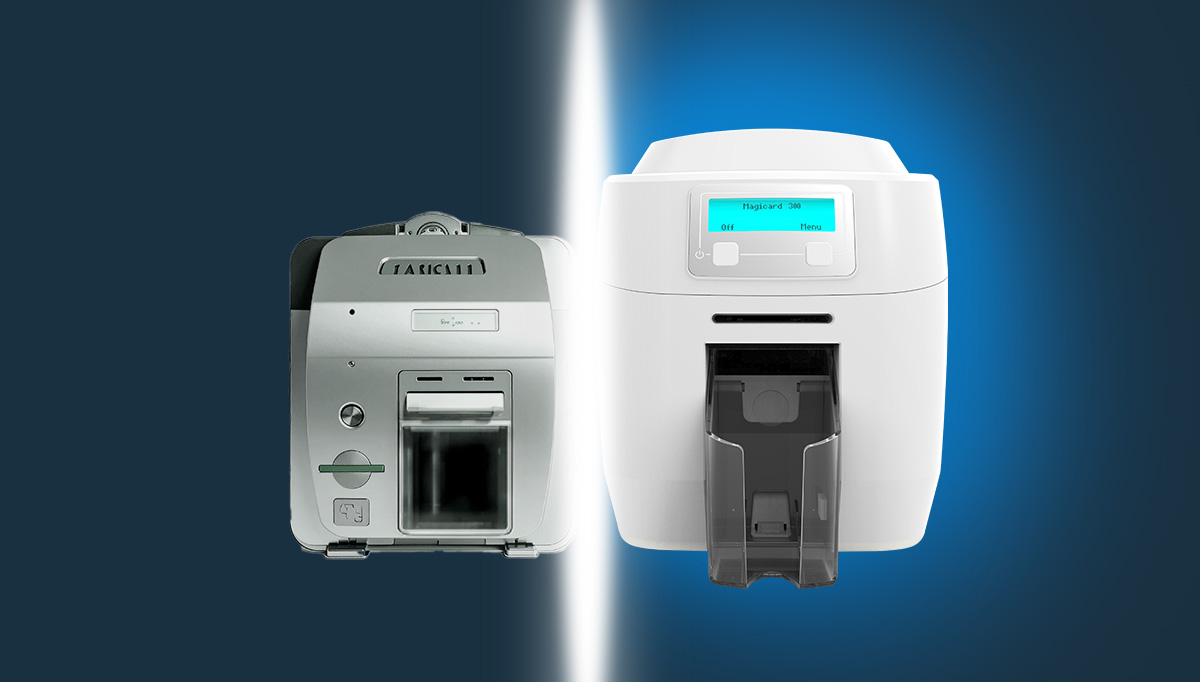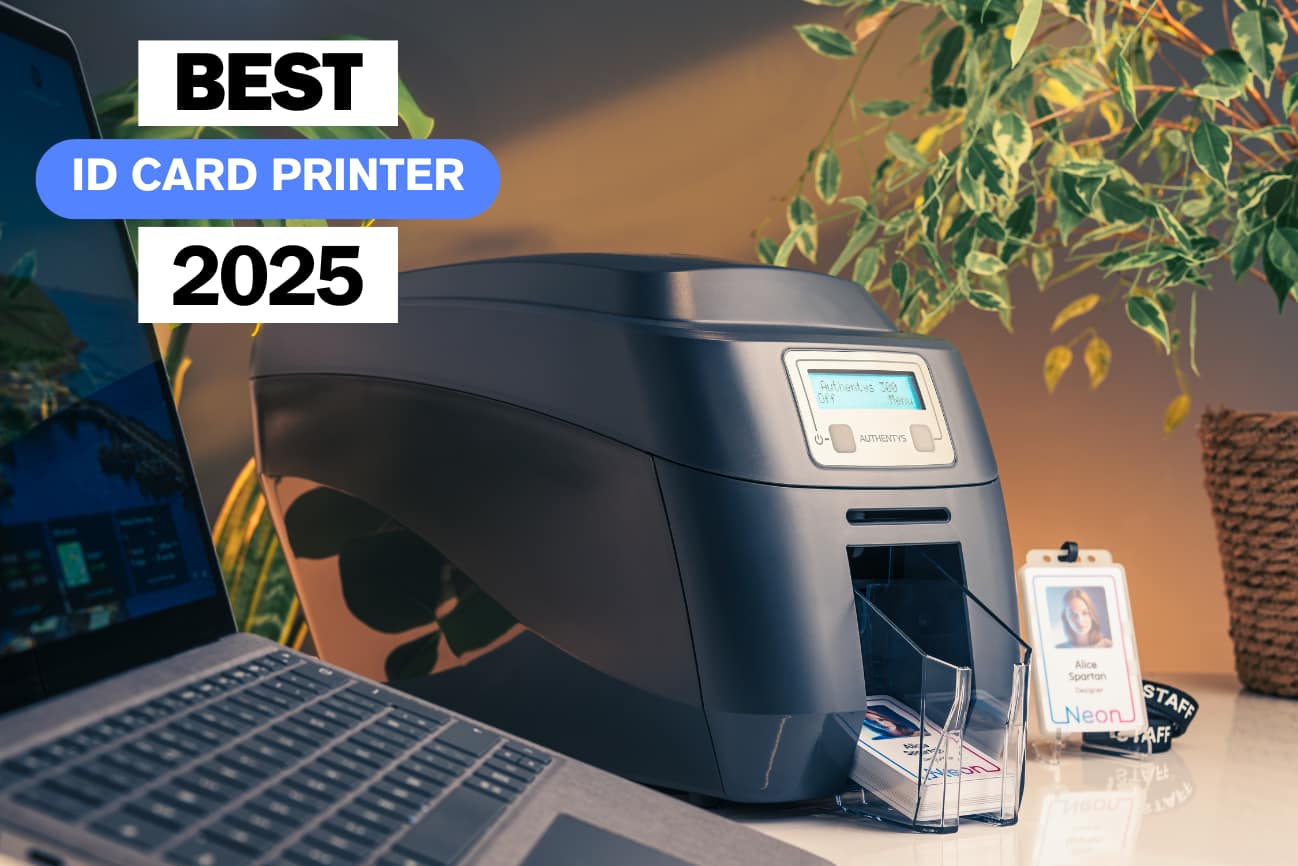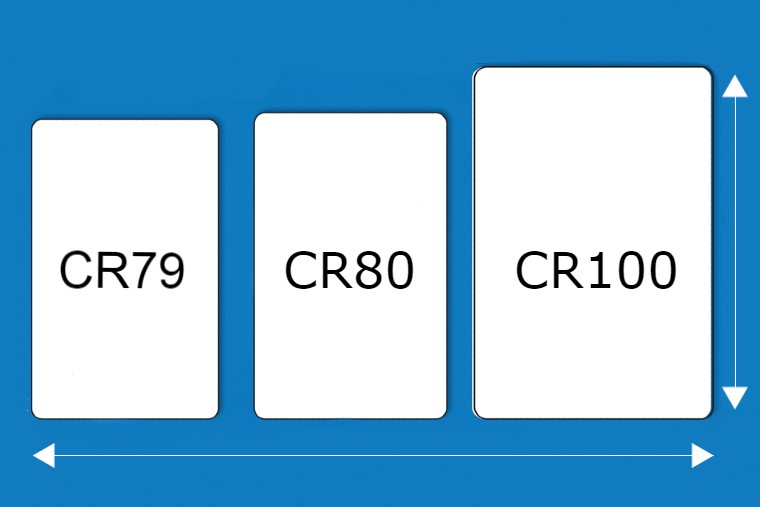In 2023, your access control card is your key. But wait – one size doesn’t fit all.
There are generally two types of access control cards: contactless cards and magnetic stripe cards. However, some cards have both features and these cards are referred to as contactless cards with a magnetic stripe.
In this post, we’re diving deep into the types of access control cards and the functions of each.
After reading this post, you should be able to decide which type of access card is the right fit for your company’s requirements. Let’s begin.
Types Of Access Control Cards
Contactless cards
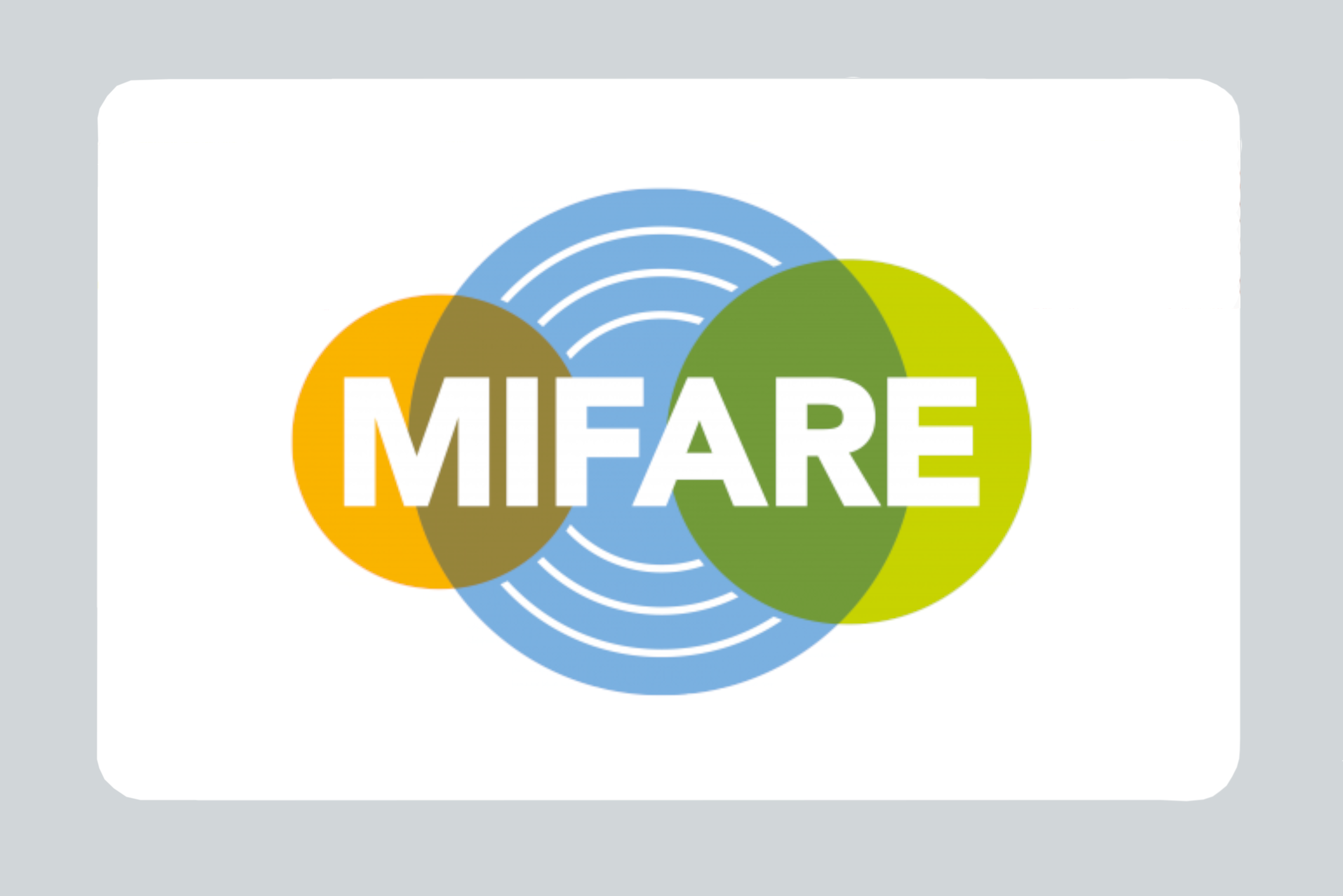
Contactless cards, also known as RFID cards, are the most popular choice of access control card.
Here’s how contactless access control cards work
These cards contain RFID (Radio Frequency Identification) technology, that features a tiny microchip and antenna internally. The microchip holds encoded data that is transmitted to an access card reader via the antenna when placed nearby. The reader then grants or denies users access.
Contactless cards have been given their name as they do not need to be physically placed into a card reader. Instead, they can be placed close to the reader for the information to be transmitted.
These cards can store up to 100 times more data than magnetic stripe cards, thanks to their RFID technology. What’s more, the technology is internalised and not exposed to outside factors which could damage it. This makes the cards more durable, so they can last years without any problems.
Card durability is one of the main reasons why people use RFID cards, and another reason is that they’re extremely easy to use. If you’re interested in purchasing some new contactless cards, the MIFARE DESFire 8K NXP EV3 cards are a secure, popular choice.
Contactless cards tend to be either 125 kHz which is considered low frequency or 13.56 MHz which is considered high frequency. High frequency cards tend to be more secure as they are encrypted, whereas low frequency cards are more vulnerable to card cloning.
Contactless cards usually come in one of two formats:
Both proximity cards and smart cards are commonly used for access control. They each contain RFID chips capable of holding information. The main difference between the two lies in their memory capacity and functional capabilities.
Proximity cards have a lower memory capacity, therefore less information can be encoded to the card, resulting in limited functionality.
On the other hand, smart cards have a higher memory capacity, so can hold more information and therefore can be used for multiple purposes, such as access control, secure print, cashless vending, etc.
You can find out more about the difference between proximity cards and smart cards in our new blog post, coming soon.
Magnetic stripe cards
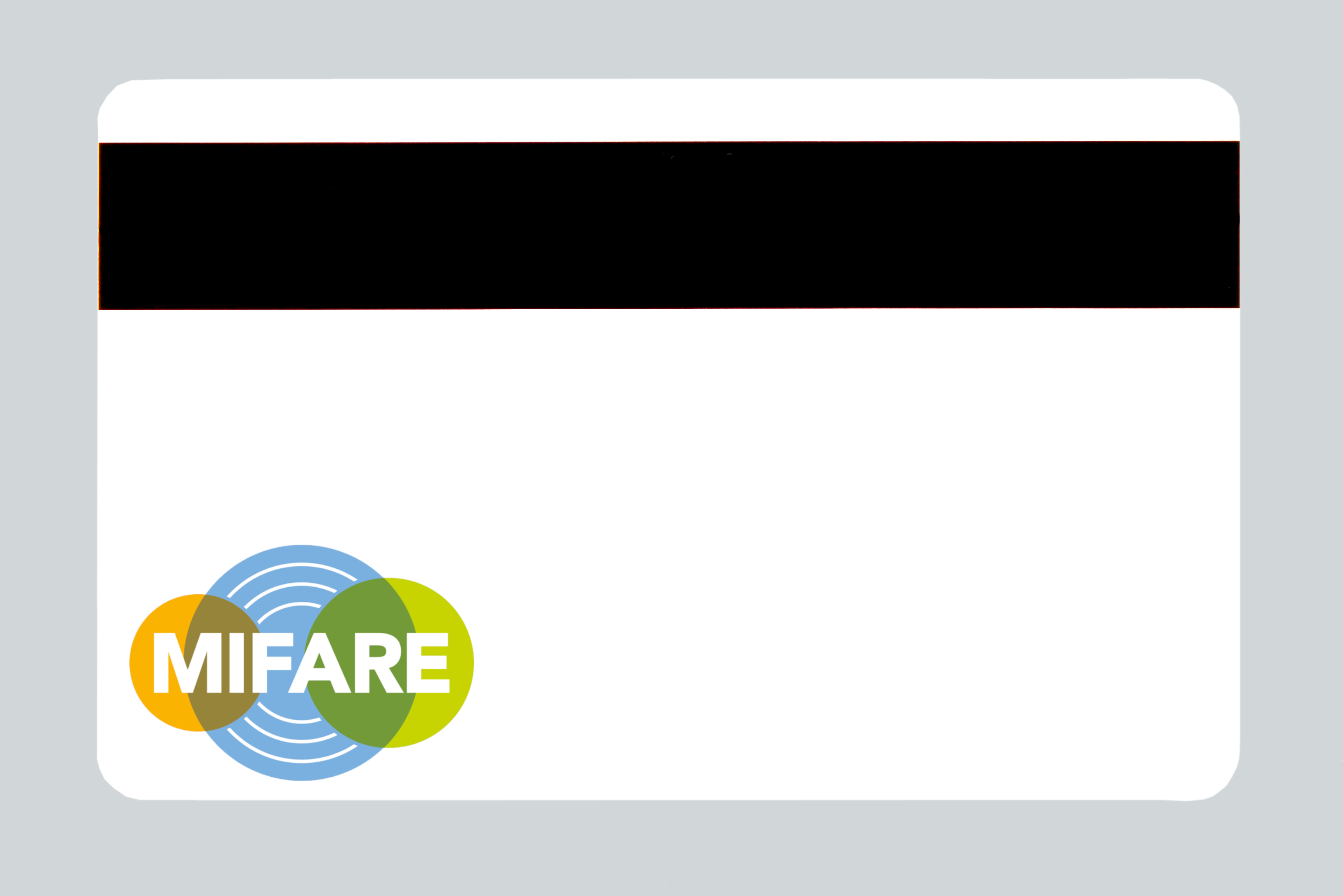
Magnetic stripe cards, also known as magstripe or swipe cards, are another type of access control card.
Here’s how magnetic stripe cards work
Cards contain a magnetic stripe which is located on the rear. This stripe holds iron particles that are magnetised to include the card’s code data.
These cards must be physically inserted and swiped in a compatible reader, which then detects the magnetic field generated by its strip. In basic terms, when the mag stripe card is swiped inside the reader, the reader reads the information and allows or denies the user access.
There are two main types of magnetic stripe cards:
Both types of magnetic stripe card can store the same amount of data. The difference between HiCo and LowCo magnetic stripe card lies in how strong the magnetic stripe encoding is.
Low-Coercivity cards have a low-intensity magnetic field (300 Oersted) that can easily be erased if the card comes into contact with an outside magnetic field. For this reason, LoCo cards are typically used for short-term applications, such as hotel room keys, store gift cards and season passes for theme parks.
Alternatively, High-Coercivity cards have a stronger magnetic field (2750 Oersted) that is less likely to be unintentionally erased when exposed to an external magnetic field. Because of this, HiCo cards can be used more frequently and have a much longer lifespan.
HiCo cards are typically used for long-term applications such as credit cards, bank cards, access control cards and transportation tickets. Our best-selling HiCo magnetic stripe cards are the MIFARE Classic 1K EV1 cards with magnetic stripe and Dyestar blank white mag stripe cards.
It’s worth noting that magnetic stripe cards use older technology than contactless cards and for this reason, they’re not as popular.
What’s more, the technology of these cards is displayed on the outside, therefore these cards are more prone to damage than contactless access cards.
We’ve now established that contactless cards and mag stripe cards are the two main types of access card. But wait – some cards have both features.
Contactless cards with magnetic stripe
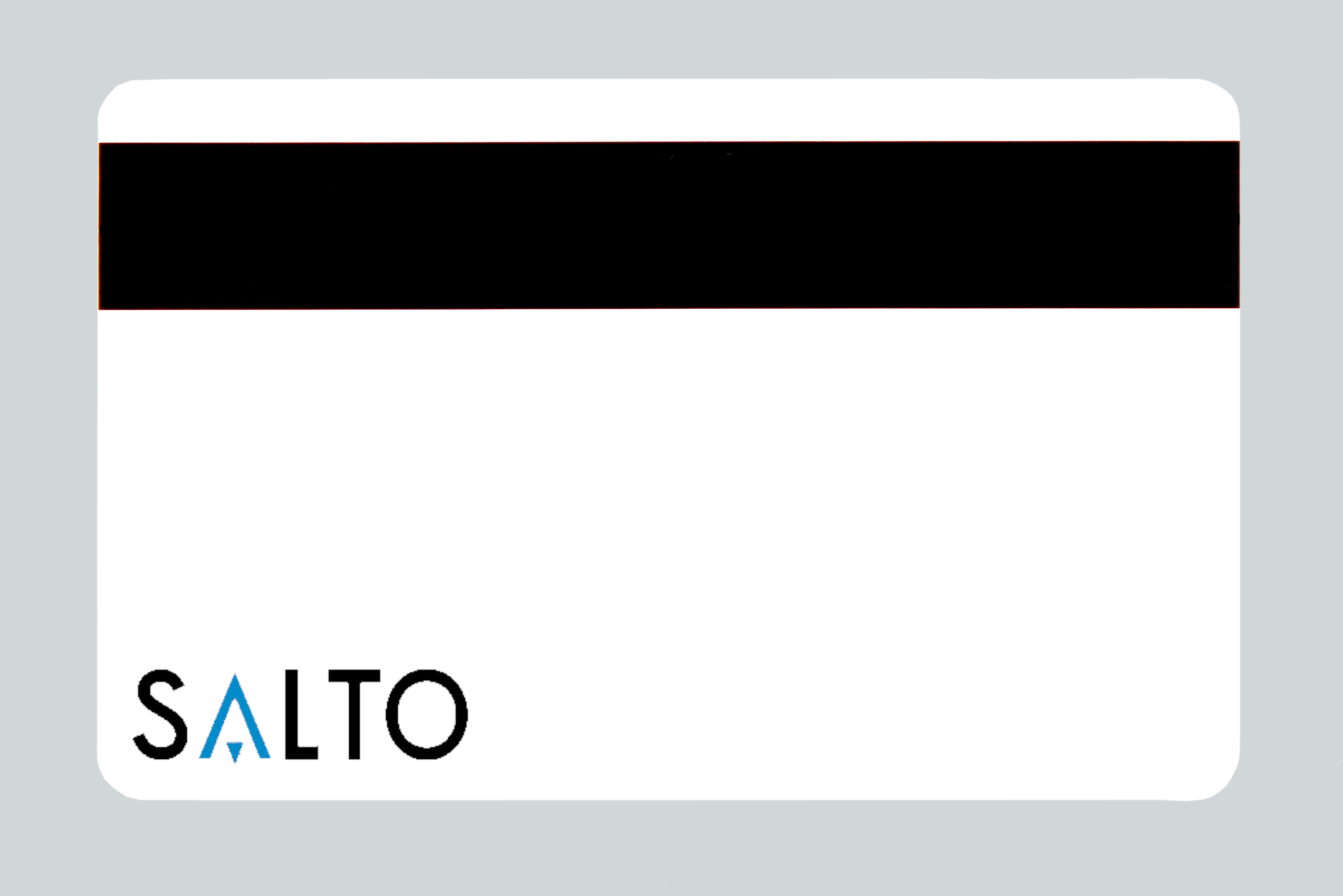
Some cards have both features, such as the Salto contactless card with Hi-Co magnetic stripe. Cards like this one offer contactless and magnetic stripe capabilities, giving a choice of credentials. This allows administrators to issue users with both credentials for double the security.
Other access control formats
Some organisations prefer alternate access control methods to cards. Other secure access control formats include:
Mobile access control – users place their smartphone close to an NFC or BLE-enabled reader to gain access
RFID key fobs – fobs use the same RFID technology as cards, in fob format
RFID stickers and tokens – stickers and tokens use the same RFID technology as cards, in sticker or token format
RFID wristbands – wristbands use the same RFID technology as cards, in wristband format. Wristbands are commonly used for events such as festivals.
Contactless cards vs magnetic stripe cards: Which type of access control card is right for you?
The right access control cards for your company depend entirely on individual requirements. For instance, you must consider factors like your building’s level of risk, whether you will be issuing temporary cards for visitors or permanent cards for staff, and how often cards will be used.
As an example. if you were looking for the safest, most durable option for regular long-term use, we’d recommend RFID cards and particularly smart cards such as the HID iClass smart cards, as they are more durable and harder to duplicate, offering a higher level of security.
Note: Regardless of which type of access control card you choose, you must ensure that the brand of cards is compatible with your current access control system.
For more information on choosing the right access control cards for your company, get in touch on 0800 988 2095 and speak to a member of our expert team today. Our team are available Monday – Friday from 9 am – 5 pm and are always happy to help. We hope to hear from you soon.

